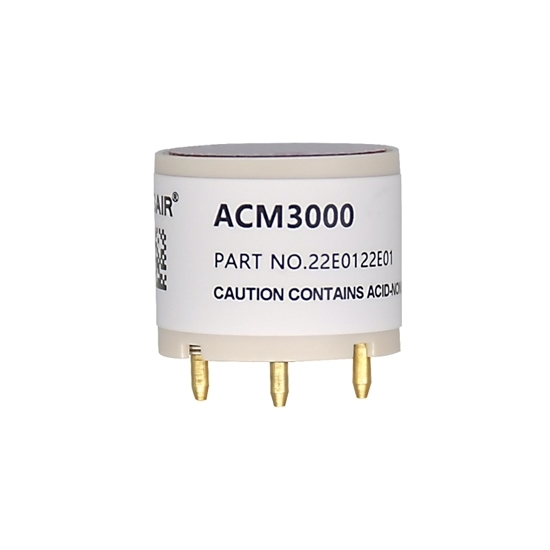
- Stock: In Stock
- Model: RDDLZ-GS-ACM3000
- Weight: 1.00
- SKU: RDDLZ-GS-ACM3000
Available Options
This Carbon Monoxide sensor with 0-1000ppm is a good choice for measuring CO concentration in the environment, such as vehicle exhaust gas detection in underground parking lots, household and commercial air purification equipment, industrial environment detection, etc.
Specifications
- Model: RDDLZ-ACM3000
- Measuring Gas: Carbon Monoxide (CO)
- Measuring Range: 0~1000ppm
- Measurement Upper Limit: 2000ppm
- Sensitivity: 70±15nA/ppm
- Response Time (T90): ≤15s (0 to 500ppm)
- Baseline Compensation: ±2ppm
- Repeatability: ≤3%
- Long-Term Drift: <2%/month
- Life Expectancy: 2 Years
- Storage Life: Half a Year (in a Special Packaging Box)
- Resolution: <1ppm
- Recommended Load Resistance: 10Ω
- Bias Voltage: 0mV
- Output Current: <0.2mA (2000ppm)
- Shell Material: Polyphenylene Ether
- Weight: <6g
- Working Temperature: -20~55℃
- Recommended Storage Temperature: 10~30℃
- Working Pressure: 0.9~1.1bar
- Working Humidity: 15~90%RH (Non-Condensing)
Dimension (Unit: mm)
Pin Definition
Applications
Tips: Where should Carbon Monoxide sensors be used?
Carbon monoxide sensors should be used in various indoor environments where there is a potential for carbon monoxide (CO) exposure due to combustion processes. Common locations include:
- Homes: Install CO sensors near sleeping areas, in basements, near attached garages, and near fuel-burning appliances like furnaces, water heaters, and stoves.
- Workplaces: Place CO sensors in areas where combustion occurs, such as boiler rooms, maintenance areas, warehouses, and industrial settings with gas-powered equipment.
- Commercial Buildings: Install CO sensors in parking garages, restaurants, hotels, and shopping centers where vehicles or combustion appliances are present.
- Recreational Vehicles: Use CO sensors in RVs, campers, and boats with fuel-burning appliances or engines.
- Educational Institutions: Place CO sensors in schools, daycare centers, and universities to protect occupants from potential CO leaks.
- Healthcare Facilities: Install CO sensors in hospitals, clinics, and nursing homes to maintain safe indoor air quality.
CO sensors should be placed at a height where they can detect CO accumulation effectively, and regular maintenance and testing are essential to ensure proper functionality. Installing CO sensors in these locations helps ensure early detection of CO levels, protecting occupants from the dangers of carbon monoxide poisoning.
